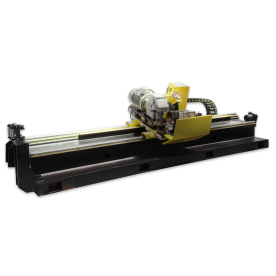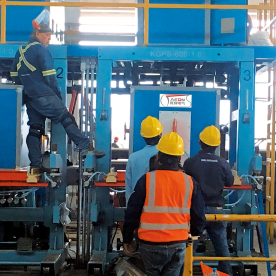[Mould for tube mill]Mould for Tube Mill: The Key Component in Tube Mill Production
News 2025-7-28

Mould for Tube Mill: The Key Component in Tube Mill Production

Mould for Tube Mill: The Key Component in Tube Mill Production
Tube mills require high levels of precision and consistency in order to produce quality products. The mould, being the heart of the tube mill, ensures that the material being processed is shaped into the desired tube form with precision. It is designed to withstand high pressure and temperature, ensuring that the material is uniformly distributed and shaped into a seamless tube.
Moreover, the mould plays a crucial role in determining the overall efficiency of the tube mill. A well-designed mould can significantly increase production rates while ensuring quality standards are met. Conversely, an inadequate mould can result in decreased production rates, increased defects, and increased maintenance costs.
The Different Types of Moulds for Tube Mills

Mould for Tube Mill: The Key Component in Tube Mill Production
1. Continuous Cast Moulds: These are used in continuous tube mills where liquid metal is continuously cast into a tube shape. They are designed to ensure uniform cooling and solidification of the metal. 2. Extrusion Moulds: These are used in extrusion tube mills where plastic or metal is forced through a die to form a tube. Extrusion moulds are designed to ensure consistent shape and size of the tube. 3. Roll Forming Moulds: These are used in roll forming tube mills where metal sheets are passed between rolls to form a tube. Roll forming moulds are designed to provide the desired shape and curvature to the tube.
Factors to Consider When Selecting a Mould for Tube Mill
When selecting a mould for tube mill, several factors need to be considered such as:
1. Material: The type of material being processed will determine the type of mould to be used. Different materials have different properties that require specific mould designs. 2. Production Rates: The desired production rates should be considered when selecting a mould. Higher production rates require moulds that can withstand higher levels of stress and wear. 3. Quality Requirements: The quality standards of the final product should be considered when selecting a mould. Moulds designed for high-quality products will ensure precision and consistency in the final product. 4. Cost: The cost of the mould should be considered in relation to the overall investment in the tube mill and the expected return on investment.
In conclusion, the mould for tube mill is a critical component that ensures the efficient and effective production of quality tubes. When selecting a mould, it is important to consider factors such as material, production rates, quality requirements, and cost. With the right mould, tube mills can achieve increased efficiency and productivity while ensuring quality standards are met.
